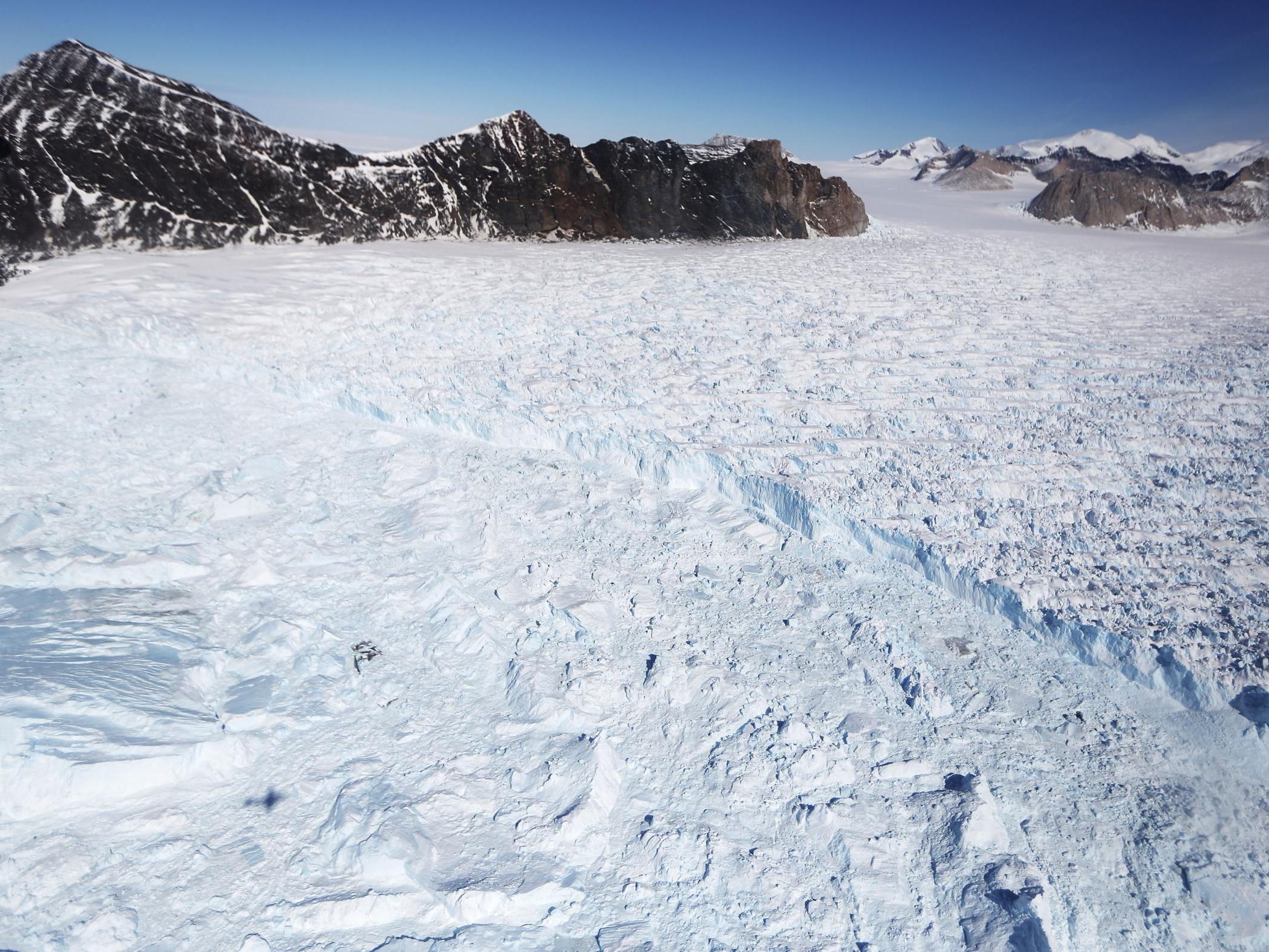Huge glaciers in East Antarctica thought to be stable are melting, Nasa research reveals
One ice mass the size of France contains enough water to raise sea levels by over three metres

Previously dormant glaciers storing vast quantities of water are “waking up” and have begun to melt even in the world’s harshest and remote environments.
Nasa has detected new signs large glaciers in East Antarctica are losing ice, raising the prospect of catastrophic sea level rises as global temperatures increase.
East Antarctica contains such huge volumes of ice that significant melting has the potential to reshape coastlines around the world; but this part of the continent has long been considered more stable than West Antarctica.
New detailed maps showing ice velocity and elevation indicate a huge group of glaciers on the East Antarctic coast, including the massive Totten Glacier, which covers about 2,400 square miles, have begun to lose increasing volumes of ice over the last decade.
The organisation says the findings hint at widespread changes in the ocean.
Scientists have previously warned the Totten Glacier, which is the fastest moving mass of ice in East Antarctica, was shrinking as a result of warming ocean water.
Nasa describes this one glacier alone as a “behemoth that contains enough ice to raise sea levels by at least 11 feet [3.3 metres]".
A group of four other glaciers west of Totten, as well as a handful of smaller glaciers further east are also losing ice.
“Totten is the biggest glacier in East Antarctica, so it attracts most of the research focus,” said Catherine Walker, a glaciologist at Nasa’s Goddard Space Flight Centre, at the American Geophysical Union meeting in Washington.
“But once you start asking what else is happening in this region, it turns out that other nearby glaciers are responding in a similar way to Totten.”
The research revealed the surface height of four glaciers in an area called Vincennes Bay have lowered by about 9 feet (2.7 metres) since 2008. Before that year, there had been no measured change in elevation for these glaciers.
“The change doesn’t seem random, it looks systematic,” said Alex Gardner, a glaciologist with Nasa’s Jet Propulsion Laboratory in Pasadena, California.
“And that systematic nature hints at underlying ocean influences that have been incredibly strong in West Antarctica. Now we might be finding clear links of the ocean starting to influence East Antarctica.”
Little is known about the shape of the bedrock around the shore in Antarctica due to the thick ice sheet and remote location, but certain formations could have beneficial or detrimental effects on supporting the ice sheet.
Glaciologists have warned that if the rock where the sea meets land is steep-sided and smooth, the ice base at the bottom of the glacier would be submerged deeper and deeper as the glacier melts. And as ice calves off, the height of the ice face exposed to the ocean would increase – speeding up melting and increasing instability.
But if the land slopes slowly into the sea and features ridges which provide friction, it would slow down the flow and loss of ice, Nasa said.
“Heightened attention needs to be given to these glaciers. We need to better map the topography and we need to better map the bathymetry,” Dr Gardner said.
“Only then can we be more conclusive in determining whether, if the ocean warms, these glaciers will enter a phase of rapid retreat or stabilise on upstream topographic features.”
The findings will compound concern about sea ice melting in the Antarctic. The western half of the continent is in the grip of far more rapid melting, where at least four glaciers dwarf the Totten glacier.
Glacier collapse shows climate impact
Show all 20A new Nasa project called Inter-mission Times Series of Land Ice Velocity and Elevation (or ITS_LIVE) is to be launched in early 2019 to track the movement of the world’s ice.
The project will include the creation of a 30-year record of satellite observations of changes in the surface elevation of glaciers, ice sheets and ice shelves, and a detailed record of variations in ice velocity starting in 2013.
Subscribe to Independent Premium to bookmark this article
Want to bookmark your favourite articles and stories to read or reference later? Start your Independent Premium subscription today.

Join our commenting forum
Join thought-provoking conversations, follow other Independent readers and see their replies